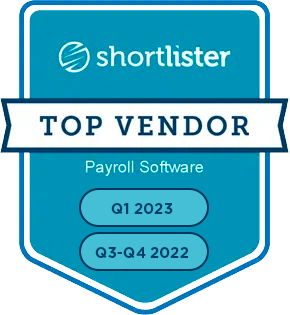Data is a goldmine in HR, equipping businesses with a deep understanding of their workforce. HR metrics are specific yardsticks that shed light on different facets of HR management. Let’s explore some common HR metrics every business should have on its radar and understand why they’re so important.
1. Employee turnover rate
The turnover rate is a key HR metric determining the proportion of employees who quit a company within a specific timeframe. If this rate is high, it could shed light on problems with the work environment. These problems can be pay scale, growth prospects, or even management or organizational culture. By watching this HR metric example, HR managers can understand why people leave and develop ways to keep them around longer.
This is the formula to calculate your employee turnover rate:
Employee turnover rate = Average Number of Employees/Number of Departures x 100
2. Cost-per-hire
The cost-per-hire metric sums up all the expenses of acquiring a new employee—from advertising and recruiting to interviewing, hiring, and training. This is an HR metric that matters for budgeting purposes. Cost-per-hire is a handy HR metric that allows businesses to fine-tune their hiring tactics and cut costs where possible while ensuring they bring in talent.
This is the formula to calculate your cost-per-hire:
Cost-per-hire = Total Recruitment Costs/Total Number of Hires
3. Employee engagement and satisfaction
Employee engagement and satisfaction are gauged through surveys and feedback mechanisms. These HR metrics assess how committed and satisfied employees are with their workplace. High engagement and satisfaction levels are often linked to increased productivity, better retention rates, and improved performance. These metrics enable HR to pinpoint areas of improvement and design initiatives that boost morale and job satisfaction.
4. Time-to-fill
Time-to-fill measures the days from when a job opening is posted until it is filled and reflects the efficiency of the recruitment process. A shorter time-to-fill indicates a more efficient hiring process.
In contrast, a longer time might suggest difficulties in finding suitable candidates or inefficiencies in the recruitment strategy. This metric helps organizations streamline their hiring processes and reduce vacancies, thereby minimizing the impact on productivity.
This is the formula to calculate time-to-fill:
Time-to-fill = Total Number of Hires/Total Recruitment Costs
5. Absenteeism
The absence rate gauges how often and how long employees are out of the office. These factors can include health issues, job discontent, or stress at work. By keeping an eye on these rates, HR can spot trends, tackle problems head-on, and put in place measures to cut down on avoidable absences.
This is the formula to calculate the absentee rate:
Absentee rate = (Total Working Days/Total Absent Days) x 100

6. Training and development ROI
This key HR metric evaluates the impact of training and development programs on employee performance and the organization’s ROI. It involves assessing improvements in skills, knowledge, and job performance post-training. Training stimulates employee growth, satisfaction, and organizational success. Measuring its effectiveness helps businesses refine their training strategies, ensuring they are relevant, efficient, and aligned with organizational goals.
This is the formula to calculate your training ROI:
Training ROI = (Training Costs/Monetary Benefits from Training – Training Costs) x 100
7. Diversity and inclusion
Diversity and inclusion HR metrics assess the groups represented in a workforce and how well these diverse employees feel appreciated and integrated. Your rate of diversity is one HR metric that can help nurture an inclusive work environment. It draws in a broader range of talent, boosts innovation, and decision-making by infusing varied viewpoints.
This is the formula to calculate your diversity rate:
Diversity rate = (Number of employees/Number of employees from a diverse background) x 100
8. Employee performance
This HR performance metric assesses the effectiveness of training programs by measuring employees’ performance improvement over time. Businesses can compare performance before and after training sessions to determine how the training has improved skills, knowledge, and competencies. Use this key HR metric to track employee performance through self-assessments, peer reviews, and manager assessments.
9. Promotion rate
The promotion rate is a common HR metric for gauging a company’s career progression scope. A decent promotion rate signals a robust internal mobility strategy and dedication to nurturing and retaining employees. It mirrors a company’s capacity to cultivate talent and offer avenues for advancement, which can greatly influence employee happiness and allegiance.
This is the formula to calculate your promotion rate:
Promotion rate = Total number of promoted employees/Total number of employees
10. Employee net promoter score (eNPS)
The eNPS is a key metric derived from asking employees how likely they are to recommend their workplace. A high eNPS suggests a positive employee experience and a strong employer brand, which can attract top talent and reduce turnover rates. By monitoring eNPS, companies can gauge the general sentiment of their workforce, identify areas for improvement, and implement strategies to enhance employee satisfaction and engagement.
This is the formula to calculate your employee net promoter score:
eNPS = (Number of promoters – detractors/number of respondents) x 100
Make data-driven HR decisions
These HR metric examples are not just numbers. They are strategic decision-making tools that empower businesses to fine-tune their operations, boost employee happiness, and hit objectives. You can save time, money and sanity with AllianceHCM helping you with your HR processes.





